August 27, 2024
Range anxiety has long deterred some people from buying electric vehicles. Wireless charging technology might turn the tide. Depending on how it is used, wireless charging could make it easier to charge EVs and less expensive to build wireless charging stations. It could also extend a vehicle’s range and reduce the need for frequent stops to replenish the battery.
Over the past few years, this nascent technology has hit a number of milestones. Its proponents have embarked on a number of pilot projects. Startups have leaped into the space, in hopes that their products will be adopted by a major car maker. Researchers at Oak Ridge National Laboratory in the U.S. recently set a wireless charging record, matching the charging speed in some plugged-in vehicles.
Wireless EV charging hasn’t been fully commercialized yet, although the global market is expected to grow from an estimated $45 million in 2024 to approximately $587 million by 2030.
What Is Wireless EV Charging?
Wireless EV charging relies on the same technology used to wireless charge a smartphone.
The researchers and investors in this space focus on two complementary charging styles. One method focuses on stationary vehicles. That style could be used in the home or at public charging stations and reduces the need to plug a vehicle in. Significant research also supports dynamic charging, which would allow vehicles to charge as they move through specially designed roadways.
Where Things Stand
The owners of larger vehicles, like commercial trucks and buses, are said to be particularly interested in wireless charging, because it could reduce the amount of time money-making vehicles spend charging, and it could reduce the size of the battery these vehicles need, making them less expensive. Rather than build new roads, public transportation systems could place charging mats at bus stops. Buses could receive small amounts of charge while picking up and dropping off passengers, which would keep the bus on the road longer.
Dynamic charging pilot projects have begun in Detroit, the historic home of the U.S. auto manufacturing business, but also in the nearby state of Indiana, in Israel and a few European locations.
According to IEEE Member Mauricio Salles, dynamic charging has advanced significantly over the past few years, with multiple pilot projects demonstrating its feasibility and potential benefits.
“The pilot projects are so important because they tell us whether the infrastructure can handle real-world conditions, such as heavy traffic and various weather conditions, without significant maintenance issues,” said Salles. “The more successful pilot projects there are, the better. Especially when it comes to alleviating consumers’ range anxiety and fears, which is critical to wider adoption.”
In 2022, a major U.S. automotive group developed standards for wireless charging of stationary vehicles, with major automakers announcing interest in the technology — though the standard for vehicles in motion are still being hashed out.
At the same time, new standards have helped to lay the metaphorical groundwork for dynamic charging, according to IEEE Member Gabrielle Silva.
“Globally, many organizations are working to develop standardized protocols and systems for interoperability among different vehicle models and charging infrastructure,” said Silva.
Opportunities for Expansion
According to Silva, dynamic charging will be increasingly driven forward as stakeholders continue to see outcomes that demonstrate the reliability, efficiency and cost-effectiveness.
Salles has identified four key areas of opportunity for dynamic charging that hold the key to viability:
- Infrastructure Development: Developing durable road materials that can withstand the installation of charging coils and climate conditions.
- Cost Reduction: Reducing the costs associated with installation and maintenance through standardization.
- Efficient Systems: Improving power transfer through advances in materials science and engineering and addressing issues related to vehicle misalignment.
- Providing Incentives: Driving adoption by encouraging the development of dynamic charging lanes and infrastructure.
The Future of Electric Mobility
Silva envisions a future where dynamic charging is commonplace.
“By 2030, dynamic charging is expected to be a mainstream technology, with widespread adoption in urban areas and along major highways,” said Silva. “Integration with renewable energy sources will likely become standard, significantly reducing the carbon footprint of EVs.”
Salles agrees.
“Improvements in infrastructure and reduced costs will drive broader adoption of dynamic charging,” said Salles. “This technology will contribute significantly to broader transition to electric mobility and will help to reduce carbon emissions significantly.”
Only time will tell what the future holds for dynamic charging, but major strides have been made over the past several years.
The future is looking increasingly electric.
If you want to learn more about design considerations for dynamic charging infrastructure, check out this article from IEEE Smart Grid.
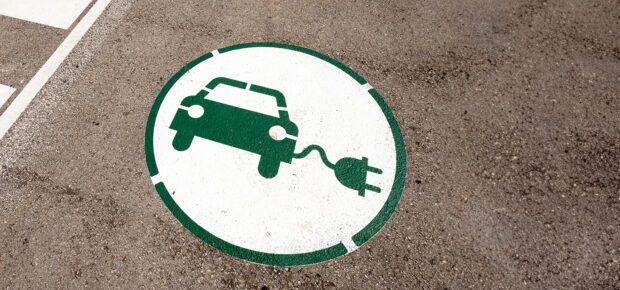




 Meaningful Momentum or Running in Place?
Meaningful Momentum or Running in Place? AI Through Our Ages
AI Through Our Ages Liquid Infrastructure: Our Planet's Most Precious Resource
Liquid Infrastructure: Our Planet's Most Precious Resource The Impact of Technology in 2025
The Impact of Technology in 2025 Quantum and AI: Safeguards or Threats to Cybersecurity?
Quantum and AI: Safeguards or Threats to Cybersecurity? Why AI Can't Live Without Us
Why AI Can't Live Without Us Bits, Bytes, Buildings and Bridges: Digital-Driven Infrastructure
Bits, Bytes, Buildings and Bridges: Digital-Driven Infrastructure Impact of Technology in 2024
Impact of Technology in 2024 Emerging AI Cybersecurity Challenges and Solutions
Emerging AI Cybersecurity Challenges and Solutions The Skies are Unlimited
The Skies are Unlimited Smart Cities 2030: How Tech is Reshaping Urbanscapes
Smart Cities 2030: How Tech is Reshaping Urbanscapes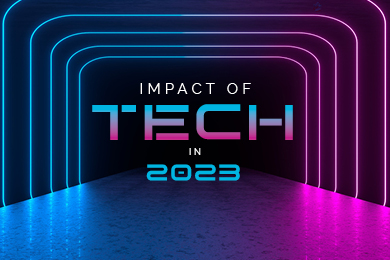 Impact of Technology 2023
Impact of Technology 2023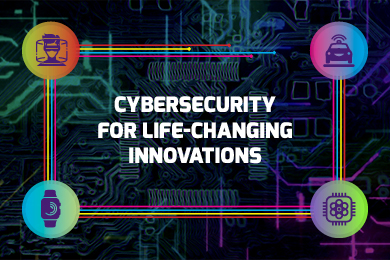 Cybersecurity for Life-Changing Innovations
Cybersecurity for Life-Changing Innovations Smarter Wearables Healthier Life
Smarter Wearables Healthier Life Infrastructure In Motion
Infrastructure In Motion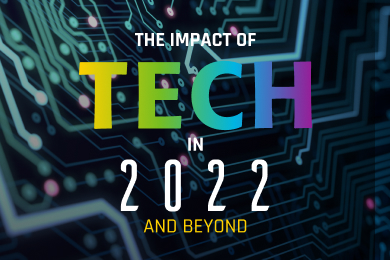 The Impact of Tech in 2022 and Beyond
The Impact of Tech in 2022 and Beyond Cybersecurity, Technology and Protecting Our World
Cybersecurity, Technology and Protecting Our World How Technology Helps us Understand Our Health and Wellness
How Technology Helps us Understand Our Health and Wellness The Resilience of Humanity
The Resilience of Humanity Harnessing and Sustaining our Natural Resources
Harnessing and Sustaining our Natural Resources Creating Healthy Spaces Through Technology
Creating Healthy Spaces Through Technology Exceptional Infrastructure Challenges, Technology and Humanity
Exceptional Infrastructure Challenges, Technology and Humanity The Global Impact of IEEE's 802 Standards
The Global Impact of IEEE's 802 Standards Scenes of our Cyber Lives: The Security Threats and Technology Solutions Protecting Us
Scenes of our Cyber Lives: The Security Threats and Technology Solutions Protecting Us How Millennial Parents are Embracing Health and Wellness Technologies for Their Generation Alpha Kids
How Millennial Parents are Embracing Health and Wellness Technologies for Their Generation Alpha Kids Space Exploration, Technology and Our Lives
Space Exploration, Technology and Our Lives Global Innovation and the Environment
Global Innovation and the Environment How Technology, Privacy and Security are Changing Each Other (And Us)
How Technology, Privacy and Security are Changing Each Other (And Us) Find us in booth 31506, LVCC South Hall 3 and experience the Technology Moon Walk
Find us in booth 31506, LVCC South Hall 3 and experience the Technology Moon Walk Virtual and Mixed Reality
Virtual and Mixed Reality How Robots are Improving our Health
How Robots are Improving our Health IEEE Experts and the Robots They are Teaching
IEEE Experts and the Robots They are Teaching See how millennial parents around the world see AI impacting the lives of their tech-infused offspring
See how millennial parents around the world see AI impacting the lives of their tech-infused offspring Take the journey from farm to table and learn how IoT will help us reach the rising demand for food production
Take the journey from farm to table and learn how IoT will help us reach the rising demand for food production Watch technical experts discuss the latest cyber threats
Watch technical experts discuss the latest cyber threats Explore how researchers, teachers, explorers, healthcare and medical professionals use immersive technologies
Explore how researchers, teachers, explorers, healthcare and medical professionals use immersive technologies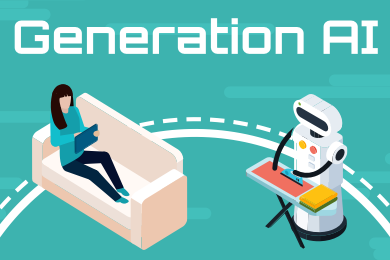 Follow the timeline to see how Generation AI will be impacted by technology
Follow the timeline to see how Generation AI will be impacted by technology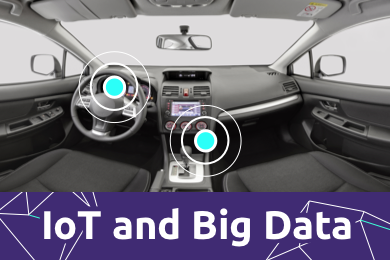 Learn how your IoT data can be used by experiencing a day in a connected life
Learn how your IoT data can be used by experiencing a day in a connected life Listen to technical experts discuss the biggest security threats today
Listen to technical experts discuss the biggest security threats today See how tech has influenced and evolved with the Games
See how tech has influenced and evolved with the Games Enter our virtual home to explore the IoT (Internet of Things) technologies
Enter our virtual home to explore the IoT (Internet of Things) technologies Explore an interactive map showcasing exciting innovations in robotics
Explore an interactive map showcasing exciting innovations in robotics Interactively explore A.I. in recent Hollywood movies
Interactively explore A.I. in recent Hollywood movies Get immersed in technologies that will improve patients' lives
Get immersed in technologies that will improve patients' lives